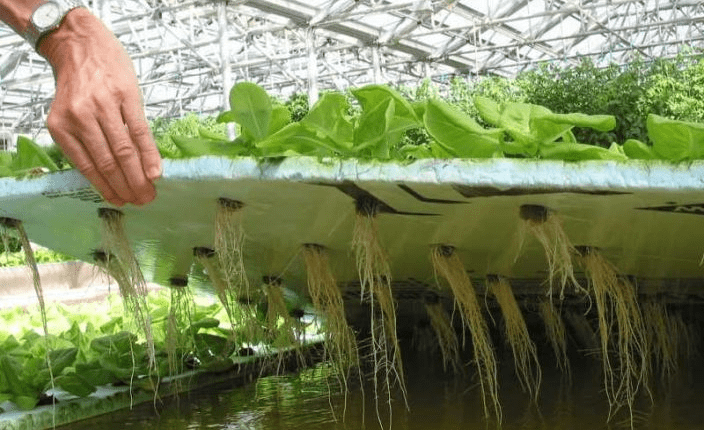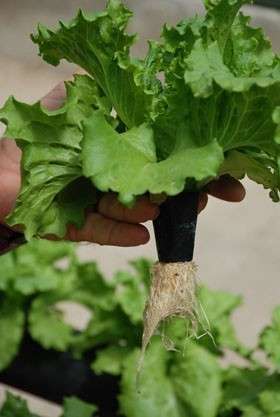What is hydroponics: modern, easy, efficient.
Many have heard of hydroponics, but not everyone is well aware of the essence of this popular technique. Let’s try to figure it out. So, what is hydroponics? There is an opinion that this is something complex, high-tech and unnatural. In fact, everything is not so.
Hydroponics is a system of growing and cultivating plants without the use of soil. The role of the supplier of all the elements necessary for the plant in this case is played by an aqueous solution. Moreover, for each group of plants, such a solution is selected individually.
There is nothing unnatural in plant nutrition fluid, no steroids or other harmful stimulants. The chemistry of this nutrient extract is uncomplicated, organic, and designed to meet the needs of the plant, nothing more. Also in this case we are not talking about any genetic mutations. This has nothing to do with hydroponics.
There is nothing complicated in hydroponics. You can grow plants in this way at home, on your own. You can even make your own custom pots or more complex and voluminous hydroponic setups. We’ll take a look at this below. Of course, commercial-scale hydroponics uses various effective technologies to facilitate the care of a large number of plants, but hydroponics at home is simple and affordable for everyone, including at a cost. Growing plants hydroponically is no more expensive than regular houseplants.
Some features of the method
Usually the plant takes everything it needs from the soil. However, the soil of the soil is different and, moreover, not all elements are evenly distributed in it. Therefore, in order to obtain all the elements it needs, the plant develops an extremely voluminous and powerful root system. When grown hydroponically, the plant has everything it needs and in the quantities it needs. Therefore, there is no need to increase the roots. And the whole potential of the plant is directed to growth, a set of green mass, to flowering and fruiting. Therefore, a plant grown by this method itself forms small roots, but a powerful aerial part.
You can grow hydroponics outdoors, indoors, and in a greenhouse. The difference is that when you grow plants outdoors you have to adapt to natural seasons, but in a greenhouse you can control the seasons and have multiple crops a year. Well, in the room you can grow flowers or other plants in small volumes, if lighting and temperature allow.
Distribution of hydroponics in the world
Hydroponics has become very popular in many parts of the world in recent years. This is especially true for those places where, for whatever reason, it is difficult to engage in agriculture on ordinary soil: due to the poverty of the soil composition or because of the climate unfavorable for plants.
For example, in some areas of the US, soils have become highly toxic due to heavy use of chemical fertilizers in previous decades. Now they grow good crops in greenhouses, using the hydroponics method. Hydroponics has also become widespread in British Columbia. Here, almost all greenhouse production of vegetables and fruits is based on hydroponics. In Holland, the famous tulips are grown in this way.
In Russia, too, there is a great interest in hydroponics. This is especially convenient for small farms that grow greens, vegetables, strawberries and other crops using this method.
It should be noted that hydroponics is not a new invention at all. Even in ancient Babylon, there were world-famous hanging gardens, where flowers and other plants were cultivated using hydroponics. In India, many crops have also been grown in this way since ancient times, using coconut fiber and immersing the roots of plants in water.
Benefits of growing plants using hydroponics
- Rapid growth, the plant is healthy and developed, because it receives exactly as many nutrients as it needs.
- Productivity increases. In the case of ornamental plants – a longer and more lush flowering.
- The roots do not dry out and are saturated with oxygen in the right amount.
- Plants do not need to be watered daily.
- The problem of insufficiency or, conversely, an overabundance of fertilizers has been solved.
- Plants, even perennials, with a developed root system, are easy to transplant.
- Soil is not needed for cultivation – this is important in cases of lack of land.
- The plant does not accumulate unnecessary or even harmful substances in its fruits, since all substances for its nutrition are strictly dosed.
- The problem of pests and diseases of the soil disappears.
- Nutrients are not subject to leaching or weathering.
- Very little space is needed to grow a large number of plants.
Hydroponic Home Techniques
What is hydroponics and what benefits it provides, we now know. Let’s see how to use this knowledge in practice.
Hydroponics uses an aqueous solution and a suitable substrate. A substrate is any porous substance that can absorb, store, and release water. Substrate can be:
- coconut fibre.
- Expanded clay.
- Mineral wool.
- Vermiculite.
- Foam rubber.
- propylene threads.
- Nylon.
- Capron.
- Granular polyethylene.
- Granite.
- Quartz.
There are options when an aqueous solution without a substrate is used, in other cases a substrate is needed, which is impregnated with an aqueous solution in one way or another. So, let’s look at how you can organize hydroponic cultivation at home.
- The nutrient solution is poured into a container, the roots of the plant are placed there, after fixing it at the surface so that it does not sink more than necessary. When part of the aqueous solution evaporates, the required amount of water is added to the container. After some time, the solution is completely changed. This method can be applied to plants whose strong root system can tolerate a lack of oxygen, since in this case the supply of oxygen to the roots is difficult.
- A double flower pot is used. In the first, larger in volume, a solution of nutrients is poured. In the second are the roots of the plant, covered with a substrate. The second pot should have many small holes all over the surface. The second pot is immersed in the first, and the liquid should fill the root system no more than two-thirds. When it is necessary to replace the solution, the pot inside is taken out and the water in the outer one is changed. This option is the simplest and most popular. In specialty stores, you can now find a large number of hydroponic pots. The outer flower pot is usually made of permeable materials and may have decorative decorations, the inner one is transparent, with a mark that marks the water level.
- When growing a large number of plants, it is convenient to use the submersible method. To do this, you need a large container (bath) with an aqueous solution. Above is a floating platform, it can be made of foam. It should have holes where plants are placed in perforated pots filled with substrate. Sometimes plants are simply immersed with their roots in water, fixed in holes without the use of pots. An aerator should be placed at the bottom of the bath so that the aqueous solution is continuously saturated with the oxygen necessary for the plants. As an aerator, you can use a regular aquarium compressor. As the plants evaporate and assimilate nutrients from the solution, the solution is replaced with a new one.
nutrient solution
The main element of hydroponics is a nutrient solution for cultivated plants. There are many ways and recipes for its preparation for each type of plant, these recipes, if desired, can be found in the special literature.
But there is an easier way: the solution can be bought at the store. The choice of these solutions in flower or garden shops is very large. Each culture needs a special solution designed specifically for it. Well, of course, be sure to follow the instructions on the bottle and strictly follow the recommendations.

